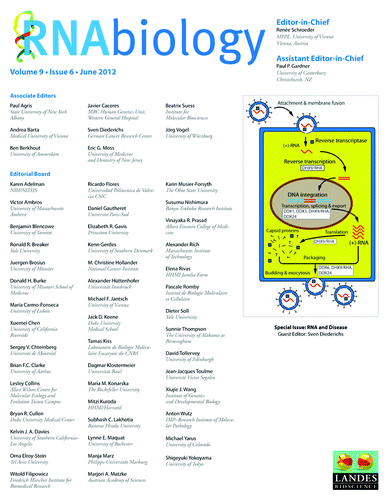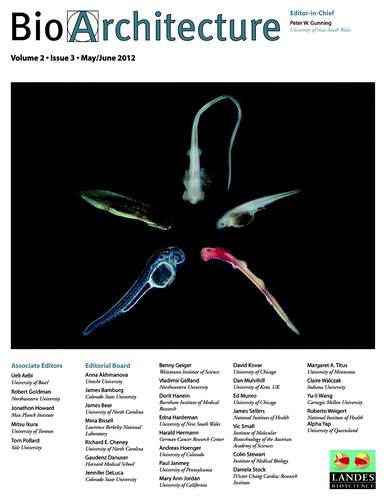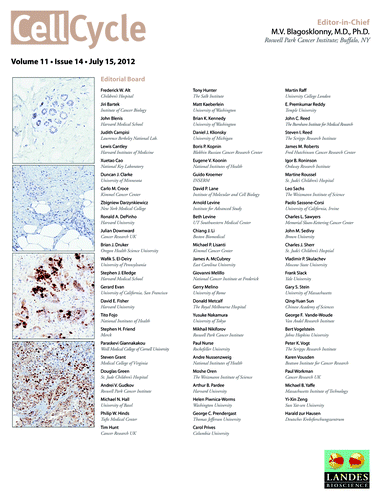Evidence for epigenetic inactivation of snoRNAs in human cancer
Cancer research has long focused on the tiny part of our genome that codes for mRNA, but in recent years it has become clear that non-coding RNAs (ncRNAs), such as microRNAs (miRNAs) or long intergenic ncRNAs (lincRNAs) also contribute to tumorigenesis. In particular, studies have shown that epigenetic silencing by CpG island hypermethylation of miRNAs with tumor suppressor activities is a common feature of human cancer. In a new study, Dr Manel Esteller and colleagues investigated whether there were other ncRNAs undergoing CpG island hypermethylation-associated inactivation in cancer cells. They focused on the small nucleolar RNAs (snoRNAs), a subset of ncRNA with a wide variety of cellular functions, such as RNA modification, pre-RNA processing and control of alternative splicing. From snoRNA databases and published literature, the researchers selected 49 snoRNAs that had a CpG island within ≤ 2 Kb or that were processed from a host gene with a 5′-CpG island. Genomic sequencing of multiple clones in normal colon mucosa and the colorectal cancer cell line HCT-116 showed that 46 snoRNAs were methylated at the same level in the two samples, either completely unmethylated (n = 26) or fully methylated (n = 20). In three cases however, the host gene-associated 5′-CpG islands of the snoRNAs (SNORD123, U70C and ACA59B) were hypermethylated in cancer cells but not in the corresponding normal tissue. CpG island hypermethylation was associated with the transcriptional silencing of the respective snoRNAs. These findings were confirmed by a DNA methylation microarray platform in a comprehensive collection of normal tissues, cancer cell lines and primary malignancies. The microarray data demonstrated that the observed hypermethylation of snoRNAs is a common feature of various tumor types, particularly in leukemias. In conclusion, the findings of this study indicate the existence of a new subclass of ncRNAs, snoRNAs, that are targeted by epigenetic inactivation in human cancer.Citation1
Nucleo-cytoplasmic transport of cytoplasmic poly(A)-binding proteins
The ubiquitously expressed Ras GTPase-activating-like protein IQGAP1 is an important cytoskeletal regulator, known to bundle and cap actin filaments at the plasma membrane, and to tether the cortical actin meshwork to microtubules via plus-end binding proteins. In addition to the plasma membrane, IQGAP1 has been detected at other subcellular sites in mammalian cells including cell cycle-dependent localizations to the nucleus and the midbody. In a new study, Drs Johnson and Henderson describe the novel subcellular localization of IQGAP1 at the cytoplasmic face of the nuclear envelope, where it co-localizes with F-actin. The IQGAP1 and F-actin staining also overlapped with that of microtubules at the nuclear envelope, revealing a pattern strikingly similar to that observed at the plasma membrane. In detergent-extracted cells IQGAP1 was retained at cytoskeletal structures at the nuclear envelope. The finding of this study has new implications for involvement of IQGAP1 in cell polarization and migration and potentially also in cell cycle-associated nuclear envelope dynamics.Citation2
Nucleocytoplasmic hybrid-cybrid-development
Nucleocytoplasmic hybrid (cybrid) embryos result from the combination of the nucleus of one species, and the egg cytoplasm of another species. Cybrid embryos can be obtained either in the haploid state by the cross-fertilization or intra-cytoplasmic injection of an enucleated egg with sperm from another species, or in the diploid state by the technique of interspecies somatic cell nuclear transfer (iSCNT). Cybrids that originate from the combination of the nucleus and the cytoplasm of distantly related species commonly fail during early embryonic development, and the cause of this arrest is currently under investigation. In a recent report, Dr John Gurdon and coworkers showed that cells isolated from a Xenopus cybrid [Xenopus (Silurana) tropicalis haploid nucleus combined with Xenopus laevis egg cytoplasm] embryo are unable to proliferate and expand normally in vitro. The authors provide evidence that the lack of nuclear donor specific maternal poly(A)+ RNA-dependent factors in the recipient species egg may contribute to the developmental dead-end of distantly-related cybrid embryos. Overall, the data are consistent with the view that the development promoted by one species’ nucleus is dependent on the presence of maternally-derived, mRNA encoded, species-specific factors. The study also shows that cybrid development can be improved without nuclear species mitochondria supplementation or replacement.Citation3
Shugoshins help maintain chromosomal stability
Accurate chromosome segregation during mitosis and meiosis is regulated and secured by several distinctly different yet intricately connected regulatory mechanisms. Since chromosomal instability is associated with many tumors as well as with infertility of germ cells, extensive research has focused on the identification and characterization of molecular components that are crucial for faithful chromosome segregation during cell division. Shugoshins, including Sgo1 and Sgo2, are evolutionarily conserved proteins that function to protect sister chromatid cohesion, thus ensuring chromosomal stability during mitosis and meiosis in eukaryotes. In higher animals, Shugoshins play an essential role in protecting centromeric cohesion of sister chromatids and assisting bi-orientation attachment at the kinetochores. Further, these proteins are safeguarding centriole cohesion/engagement during early mitosis. Many molecular components have been identified that play essential roles in modulating/mediating Sgo functions. A new review by Drs Yixin Yao and Wei Dai primarily summarizes recent advances on the mechanisms of action of Shugoshins in suppressing chromosomal instability during nuclear division in eukaryotic organisms.Citation4
References
- Ferreira HJ, Heyn H, Moutinho C, Esteller M. CpG island hypermethylation-associated silencing of small nucleolar RNAs in human cancer. RNA Biol 2012; 9:881 - 90; http://www.landesbioscience.com/journals/rnabiology/article/19353/ http://dx.doi.org/10.4161/rna.19353; PMID: 22617881
- Johnson MA, Henderson BR. The scaffolding protein IQGAP1 co-localizes with actin at the cytoplasmic face of the nuclear envelope: implications for cytoskeletal regulation. Bioarchitecture 2012; 2; In press http://www.landesbioscience.com/journals/BioArchitecture/article/21182/ http://dx.doi.org/10.4161/bioa.21182; PMID: 22964981
- Narbonne P, Halley-Stott RP, Gurdon JB. On the cellular and developmental lethality of a Xenopus nucleocytoplasmic hybrid. Commun Integr Biol 2012; 5:329 - 33; http://www.landesbioscience.com/journals/cib/article/20334/ http://dx.doi.org/10.4161/cib.20334
- Yao Y, Dai W. Shugoshins function as a guardian for chromosomal stability in nuclear division. Cell Cycle 2012; 11:2631 - 42; http://www.landesbioscience.com/journals/cc/article/20633/ http://dx.doi.org/10.4161/cc.20633; PMID: 22732496



